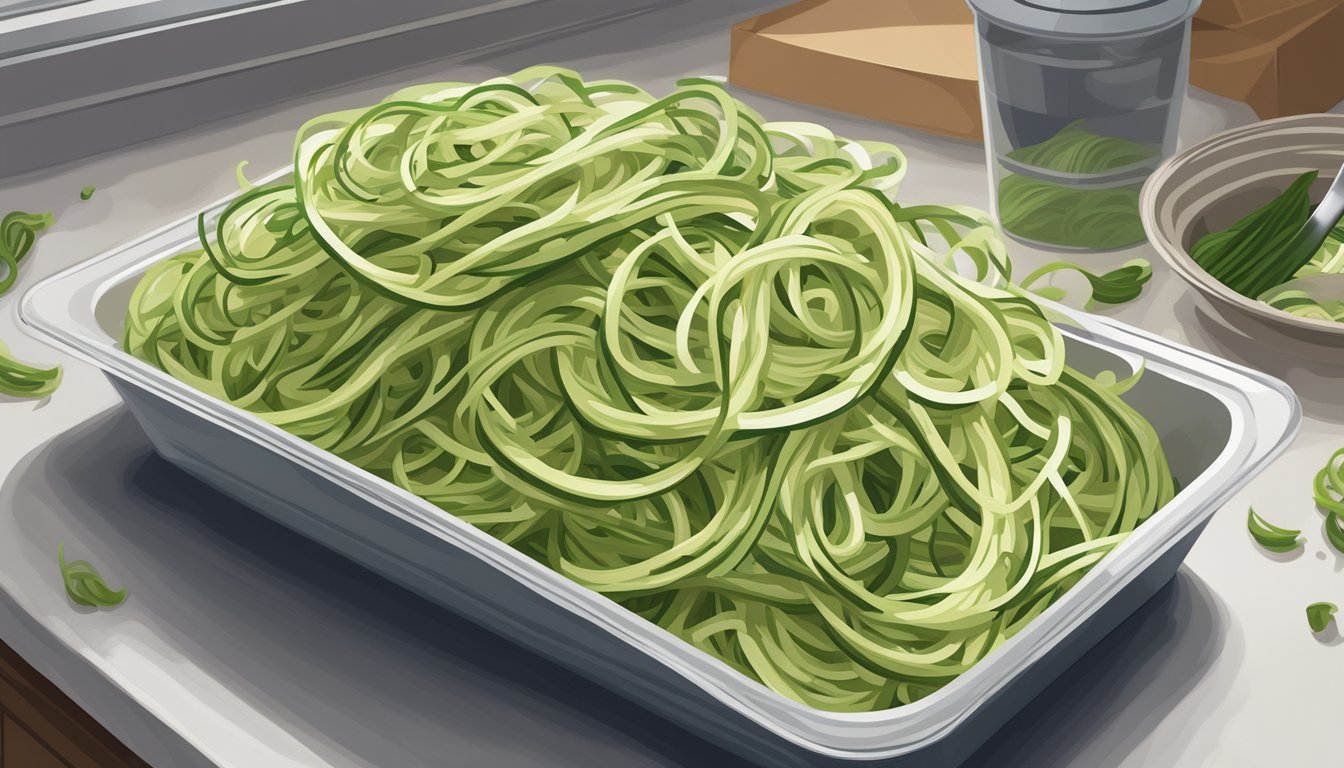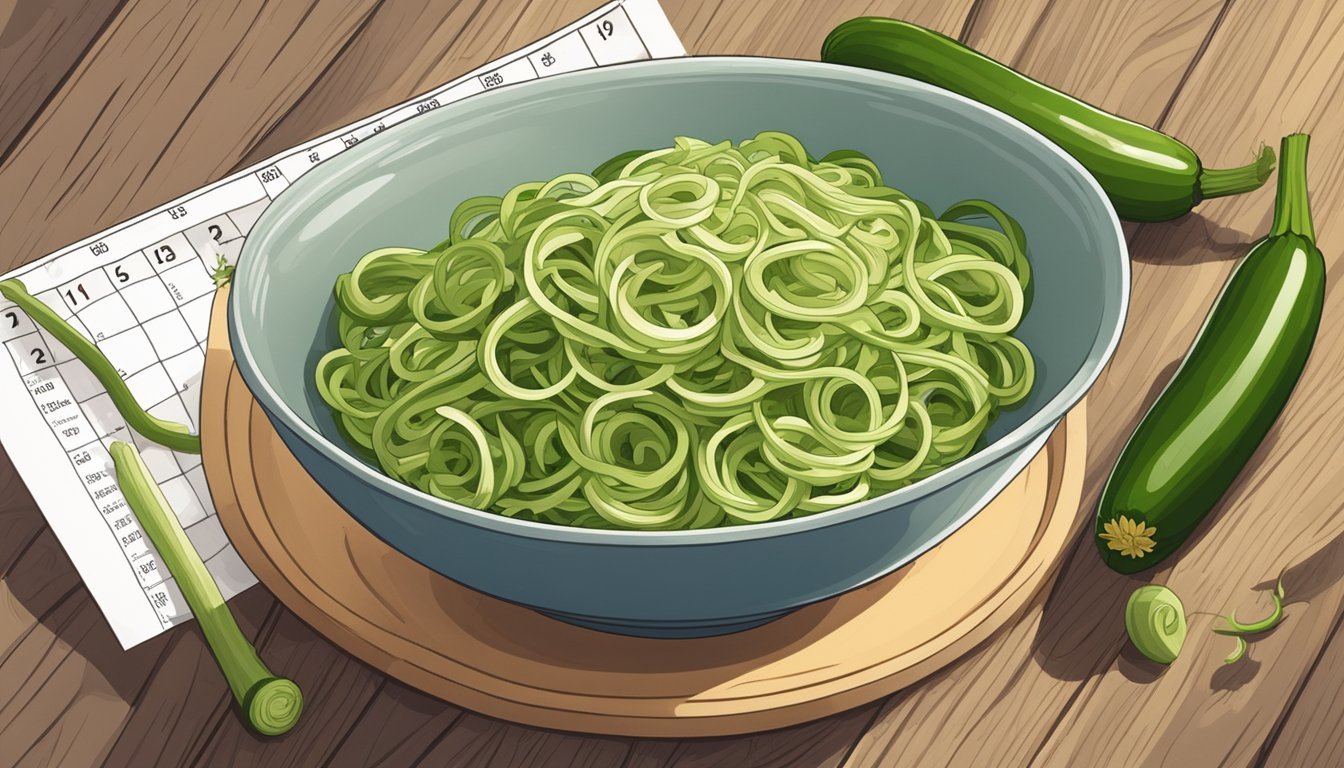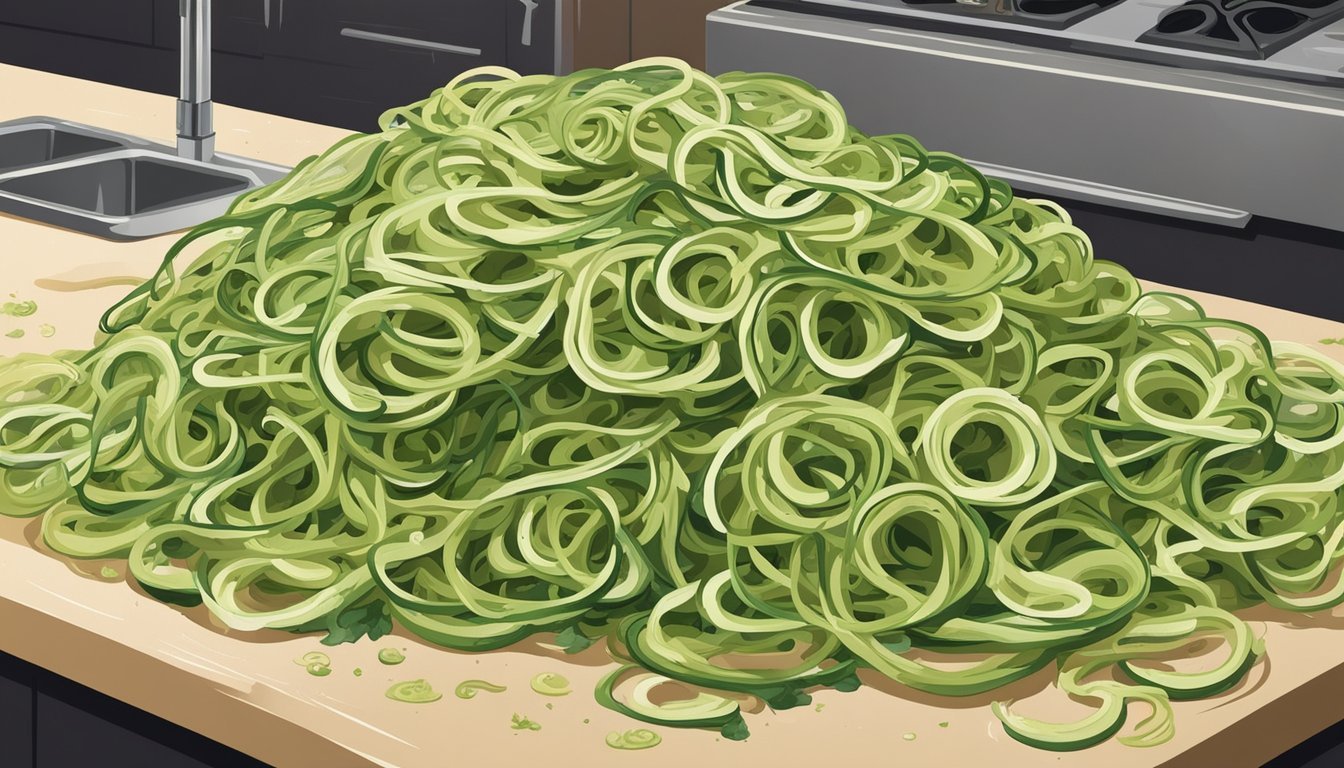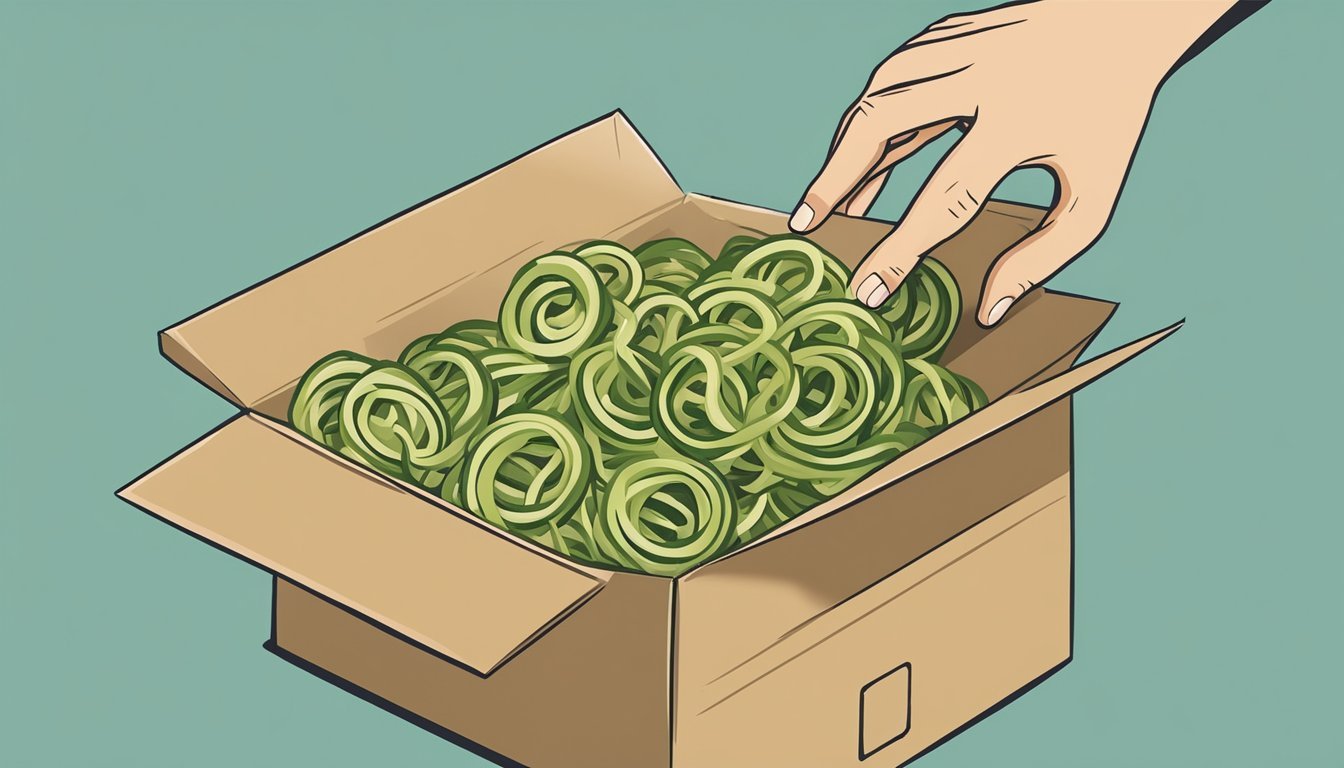Is it Safe to Eat Expired Zucchini Noodles?
Understanding Food Safety Standards
Determining the safety of consuming expired food is a common concern, especially when it comes to products like zucchini noodles, often referred to as "zoodles." Zucchini noodles are a popular low-carbohydrate alternative to traditional pasta, made by spiraling zucchini into noodle-like strands. As a fresh vegetable product, it's crucial to consider signs of spoilage that affect both safety and quality.
When it's about expired zucchini noodles, one should first inspect the physical condition of the noodles. Fresh zucchini noodles typically possess a firm texture and a vibrant green color. If the noodles exhibit any signs of dullness, mushiness, or an off-putting odor, they have likely surpassed their prime for consumption. Consuming compromised zucchini noodles could lead to foodborne illnesses, with symptoms ranging from mild digestive discomfort to more severe health issues.
Storage conditions play a pivotal role in the longevity of zucchini noodles. Keeping them in a proper environment – cool, dry, and refrigerated – can extend their usability beyond the printed expiration date. However, it remains essential to trust one's senses and best judgment when assessing their edibility, as improper storage can hasten the degradation process, making them unsafe to eat even before the expiration date.
Understanding Zucchini Noodles
Zucchini noodles, often called zoodles, are a popular, health-conscious alternative to traditional pasta. They are created using a variety of kitchen tools and boast a nutritional profile that is beneficial for those following specific dietary needs.
Characteristics of Zucchini Noodles
Zucchini noodles are made by cutting zucchini into long, spaghetti-like strands using kitchen tools like a spiralizer, mandoline, julienne peeler, or vegetable peeler. The process transforms the vegetable into a pasta-like shape that is not only low-carb but also suitable for a gluten-free diet. Zoodles can be enjoyed raw, lightly sautéed, or cooked to mimic the texture and versatility of regular noodles. Their ability to absorb flavors makes them an adaptable ingredient in a variety of recipes.
Nutritional Value
The nutritional value of zucchini noodles is a key factor in their rising popularity. They are significantly low in calories, with only a few calories per cup, and are low in carbs. This makes them an excellent choice for anyone looking to reduce their caloric or carbohydrate intake. In addition to being low-calorie, zucchini noodles provide essential nutrients such as potassium and vitamin C. One cup of zoodles contains nearly 1 gram of protein and is also a source of dietary fiber, which can aid in digestion.
Nutrient Amount per 1 cup of Zoodles Calories ~20 kcal Carbohydrates ~4 grams Protein ~1 gram Potassium ~295 milligrams Vitamin C ~20 milligrams
Overall, their light nutritional footprint coupled with their substantial vitamin content positions zucchini noodles as a robust component of a healthful diet.
Food Storage Fundamentals
Ensuring the safety of food consumption often depends on proper storage techniques. With zucchini noodles, their delicate nature requires adherence to specific conditions to maintain freshness and minimize the risk of spoilage.
Optimal Conditions for Zucchini Noodles
Zucchini noodles should be stored in the refrigerator immediately after purchase or preparation. They are best kept at temperatures just above freezing, typically between 35°F to 40°F (1.7°C to 4.4°C), to slow down the decay process without causing ice crystal formation, which can break down cell structure. The environment should be humid yet not wet, as excess moisture accelerates spoiling. Zucchini noodles should be placed in a sealed container or a resealable plastic bag with a paper towel to absorb any additional moisture. Shelf life in the refrigerator is approximately 2-3 days.
Freezing Zucchini Noodles for Longevity
To freeze zucchini noodles:
Blot them with paper towels to remove excess moisture.
Arrange the noodles in a single layer on a baking sheet, not touching, to prevent clumping.
Flash-freeze them for 1-2 hours until solid.
Transfer the frozen zucchini noodles to airtight freezer-safe bags or containers, squeezing out as much air as possible before sealing.
By freezing the noodles, their shelf life extends up to several months. However, texture changes can occur, so they may be less firm upon thawing. It's important to label the packaging with the freezing date for proper food rotation in the freezer. When ready to use, cooking the frozen food directly from the freezer is recommended to prevent mushiness that comes with thawing.
Safety and Spoilage
When determining the safety of zucchini noodles, especially after the expiration date, it's crucial to identify signs of spoilage to prevent foodborne illness. Examining the noodles' appearance, texture, and odor provides insight into their freshness and safety for consumption.
Identifying Spoiled Zucchini Noodles
Appearance: Fresh zucchini noodles should be vibrant in color. Spoiled noodles may exhibit mold, dark spots, or an overall dullness.
Texture: The noodles should be firm and slightly springy. If they feel mushy, slimy, or have softened significantly, they are likely spoiled.
Odor: A fresh zucchini noodle will have an earthy, fresh smell. A sour or off odor is a clear indication that the noodles are no longer safe to eat.
Risks of Eating Expired Zucchini Noodles
Bacterial Growth: Consuming expired noodles can lead to foodborne illnesses, as bacteria like Salmonella may develop.
Symptoms of Illness: Eating spoiled zucchini noodles can result in symptoms such as nausea, vomiting, diarrhea, and fever.
Expiration and "Best by" Dates: It's important to note that "best by" dates are indicators of quality rather than safety. However, significant time past these dates increases the risk of spoilage and bacterial growth.
Food Safety Expert Advice: They recommend discarding zucchini noodles that show any signs of spoilage or have been stored improperly to avoid the risk of foodborne illnesses.
Preparation and Usage
When preparing zucchini noodles, also known as zoodles, one should pay special attention to cooking methods to ensure optimal flavor and texture. Freshness is key to maintain the integrity of the dish, from the initial preparation to the cooking process.
How to Cook Zucchini Noodles
Zucchini noodles can be cooked using various methods, each imparting a different texture to the dish. To achieve al dente zoodles, which are firm to the bite, sautéing is a preferred method. This method usually involves lightly cooking the zoodles in a pan with a bit of oil or butter for 1-2 minutes.
Blanching is another technique that involves boiling the zoodles for one minute, then plunging them into iced water to stop the cooking process. This method can help to retain a crisp texture.
For a different approach, baking zucchini noodles in an oven can provide a firmer texture if avoiding excess moisture is a goal. This can be accomplished by spreading the zoodles evenly on a tray and baking at a low temperature until slightly dehydrated but not browned, typically for 5-10 minutes.
Freshness and Flavor Retention
Fresh zucchini noodles should be consumed relatively quickly as they can lose both texture and flavor over time. If they are not used immediately, freezing is a viable option to consider. However, the zoodles should be thoroughly dried before freezing to avoid sogginess upon thawing. They can be flash-frozen on a tray then stored in freezer-friendly bags to maintain quality.
Incorporating flavors such as garlic parmesan can elevate the taste of zucchini noodles in recipes. When making garlic parmesan zucchini noodles, freshly grated parmesan and minced garlic are recommended to maximize the flavor profile while cooking. Recipes that incorporate these ingredients complement the mild taste of zucchini well and enhance the overall dining experience.
Storing the zoodles properly is crucial for flavor retention. Airtight containers or sealed bags are best for keeping them fresh, whether in the refrigerator for short-term use or in the freezer for long-term storage. Remember, zoodles are most flavorful when fresh, so for the best results, consume them as close to the time of preparation as possible.
Pairing and Recipes
Zucchini noodles, often referred to as zoodles, are a versatile food that can be paired with a variety of ingredients and incorporated into numerous recipes. The following sections detail complementary foods for zoodles and provide a collection of creative recipe ideas.
Complementary Foods for Zucchini Noodles
Zoodles pair well with a broad spectrum of foods that enhance their flavor and texture. When considering proteins, chicken, meat, and fish serve as robust options that complement the lighter zoodles. One can also add eggs for a boost of protein in a breakfast stir-fry. For vegetarians, tossing zoodles with cheese such as feta or paneer provides a satisfying alternative.
In terms of vegetables, zoodles blend nicely with tomatoes, cucumbers, and olives. Aromatic herbs like basil can be sprinkled on top to amplify the dish's freshness, while garlic is a classic flavor enhancer in many zoodle recipes. For those who enjoy a spicy kick, crushed red pepper flakes are a perfect addition.
Proteins: Chicken, meat, fish, eggs
Cheese: Feta, paneer
Vegetables: Tomatoes, cucumbers, olives
Herbs & Spices: Basil, garlic, crushed red pepper flakes
Creative Zucchini Noodle Recipes
Zucchini noodles are an excellent base for a variety of creative recipes. A popular option is Garlic Shrimp Zoodles—a quick sauté of shrimp with garlic, olive oil, and a handful of basil leaves makes for a flavorful and light entrée. Alternately, a Zoodles with Bacon and Cheese dish adds a hearty dimension to the zoodles experience, where crispy bacon and melted cheese create a comforting and savory meal.
For those seeking out a fiery dish, Chili Zoodles incorporate zoodles into a traditional chili recipe, replacing beans or cereal grains. The zoodles absorb the bold flavors of chili spices while introducing a pleasant, al dente texture. Here's a simple table for inspiration:
Recipe Name Key Ingredients Garlic Shrimp Zoodles Zoodles, shrimp, garlic, basil, olive oil Zoodles with Bacon and Cheese Zoodles, bacon, cheese Chili Zoodles Zoodles, chili spices, tomato sauce, meat or beans
By combining zoodles with various proteins, vegetables, and seasonings, one can craft an array of dishes suitable for any palate.
Understanding Expiration Labels
When it comes to food safety and quality, understanding expiration labels is crucial. These labels provide valuable information to help consumers make informed decisions about the foods they eat, including zucchini noodles.
Interpreting Dates on Packaging
Expiration dates on food packaging – use by, best by, and sell by labels – are indicators of food quality, not safety. These labels imply:
Best By: This suggests when the product will be at its peak quality. It is not a purchase or safety date.
Use By: This date is the last day recommended for the use of the product while at peak quality.
Sell By: This date tells the store how long to display the product for sale. Consumers should buy the product before this date.
Food product dating is more complex for perishable foods like fresh produce. Zucchini noodles, when not shelf-stable, are prone to quality degradation and consumers should pay close attention to these dates.
USDA Guidelines on Expiration Dates
The USDA provides guidelines on food product dating which are important for maintaining food safety. Key points include:
The USDA does not require food product dating by federal law, except for infant formula.
Perishable foods should be consumed by the "use by" date or frozen before that date to extend their life.
Shelf-stable and frozen foods often have longer consumption windows and are less reliant on the printed date, assuming proper storage conditions are met.
By understanding these labels and guidelines, consumers can ensure they are consuming foods, like zucchini noodles, that are both safe and of good quality.
Health Considerations
When it comes to consuming expired zucchini noodles, understanding the potential health risks and prevention measures is crucial for maintaining food safety and avoiding foodborne illnesses.
Impact of Expired Foods on Health
Expired zucchini noodles, or 'zoodles,' can harbor bacteria and molds that pose risks to health. It's vital to recognize that the quality of food degrades over time, even with low-fat alternatives such as zoodles, which are often lauded for their nutritional benefits like bone-strengthening calcium. When expired, these noodles may compromise food safety, leading to foodborne illnesses. Symptoms to watch for include nausea, vomiting, diarrhea, and fever—all indicative of possible food poisoning.
Preventing Foodborne Illness
To prevent foodborne illness, one should ensure proper storage of zucchini noodles in a cool, dry place and adhere to expiration dates. If storage conditions are optimal, dried noodles can sometimes be safe past their expiration date, but fresh zoodles should be consumed promptly. In case of doubt, one must cook a sample to assess quality. To prevent Salmonella or E. coli contamination, it is recommended to:
Cook zucchini noodles thoroughly to kill potential bacteria.
Refrigerate any cooked noodles promptly.
Discard any zoodles that exhibit an off smell, taste, or appearance.
Sustainability and Food Waste
To combat food waste effectively, one must understand the importance of proper storage and the potential for expired foods like zucchini noodles to be reclaimed. Reducing waste not only aids in sustainability efforts but also stretches the value of your food investment.
Reducing Waste with Proper Storage
Storing: Zucchini noodles have a limited shelf life, and to extend their freshness, proper storage is crucial. They should be kept in an airtight container in the refrigerator to maintain their quality. To minimize the risk of spoilage and food waste, adhere to the recommended storage guidelines.
Refrigeration: Keep at temperatures between 40°F (4°C) and 32°F (0°C).
Avoid excess moisture: Too much moisture can speed up the degradation process.
Proper storage does not only preserve the quality of zucchini noodles but contributes significantly to the reduction of food waste.
Reviving Slightly Expired Zucchini Noodles
Expired does not always mean inedible. For zucchini noodles that are just past their expiration date, there is the potential for reviving their freshness and hydration.
Check for signs of spoilage: If there's no mold or off smell, they may still be safe to eat.
Hydration: Slightly dehydrated noodles can be refreshed by submerging them in ice water for a few minutes.
Vegetable peeler: Freshen up the outer layer with a vegetable peeler if the noodles look a bit wilted.
Through these methods, one might save zucchini noodles from becoming part of the food waste statistic while maintaining the integrity of their meals. These steps not only emphasize sustainability but also reaffirm the commitment to reducing food waste.
Frequently Asked Questions
When it comes to consuming zucchini noodles, safety is paramount. This section addresses some of the most common concerns related to the shelf life, storage, and spoilage indicators of zucchini noodles.
Can You Eat Zucchini Noodles Past the Expiration Date?
Zucchini noodles, like other perishable foods, come with an expiration date that should generally be heeded. Eating zucchini noodles past this date could increase the risk of foodborne illness, especially if the noodles exhibit changes in smell, color, or texture that suggest spoilage. While it might be tempting to use them slightly beyond the expiration date, doing so is not advised.
How Long Can You Keep Zucchini Noodles in the Fridge or Freezer?
When stored properly in the refrigerator, zucchini noodles are best consumed within 2-3 days to ensure their freshness and quality. If you choose to freeze the noodles, they can retain quality for 4-6 months. To freeze the noodles:
Pat them dry thoroughly.
Lay them out on a tray to flash-freeze.
Transfer to freezer-friendly bags and label with the freezing date.
What Are the Signs That Zucchini Noodles Have Gone Bad?
One should assess zucchini noodles using their senses to determine their quality. The tell-tale signs of spoilage are:
Smell: A sour or off odor is a clear indication the noodles should not be eaten.
Color: Any discoloration, like excessive browning or dullness, could mean the noodles have spoiled.
Texture: If the noodles feel slimy or mushy, it is best to throw them away as they are no longer safe to consume.
Heeding these signs will help minimize the risk of consuming spoiled zucchini noodles and prevent potential foodborne illnesses.









